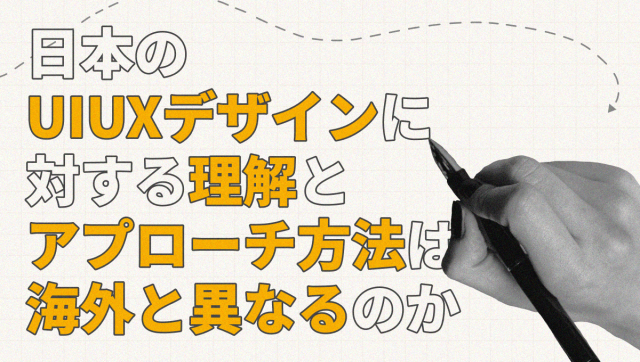
In today's increasingly digitalized society, most of the things we need in our daily lives, such as obtaining information, purchasing products, and using services, are all on our smartphones.
A survey of time spent using digital devices conducted by the Ministry of Internal Affairs and Communications shows that the usage rate of all generations is increasing year by year, indicating that the use of digital devices such as smartphones has become a part of daily life. Did you know that even the designs of apps that we take for granted are designed to make them easier to see and use? It is said that the design can greatly influence the acquisition of users.
Therefore, this time, we will focus on UI/UX design within design and explain the characteristics of design, the differences in understanding between Japan and Globally, and important points when actually designing. This is a must-read for anyone interested in UI/UX design or considering product development or renewal. Please watch till the end.
Design has been strongly influenced by social background and culture, and various types have been born. In modern times, there are various types of design, such as UI design, UX design, web design, and graphic design. Here we will introduce the main designs used in the IT industry.
UI Design
UI is an abbreviation for user interface, which refers to the part that connects the user and the system, and is mainly used in software and applications. We place emphasis on usability, such as functionality, operability, and visual elements, rather than a detailed, glittering design that emphasizes appearance, and we place importance on allowing users to operate the system intuitively.
UX Design
UX is an abbreviation for user experience, and it refers to the overall experience that users get when using a product or service, and like UI, it is important in the design of software and apps. It is a concept necessary to improve the user experience of a product, such as being able to accomplish the desired action without hesitation, wanting to use it again, being easy to use, and meeting the user's needs.
Web Design
Web design mainly refers to the design of websites, and is mainly used for homepages, blogs, news sites, etc. Web design is fundamentally about how users view information, so it focuses on visual aspects such as layout, color scheme, navigation, fonts, content placement, layout, and branding .
Graphic Design
Graphic design is a field of design that aims to create a visual impact . Used in printed materials, advertisements, logos, packaging design, illustrations, app tutorial images, etc. In some cases, information is conveyed only through typography without illustrations.
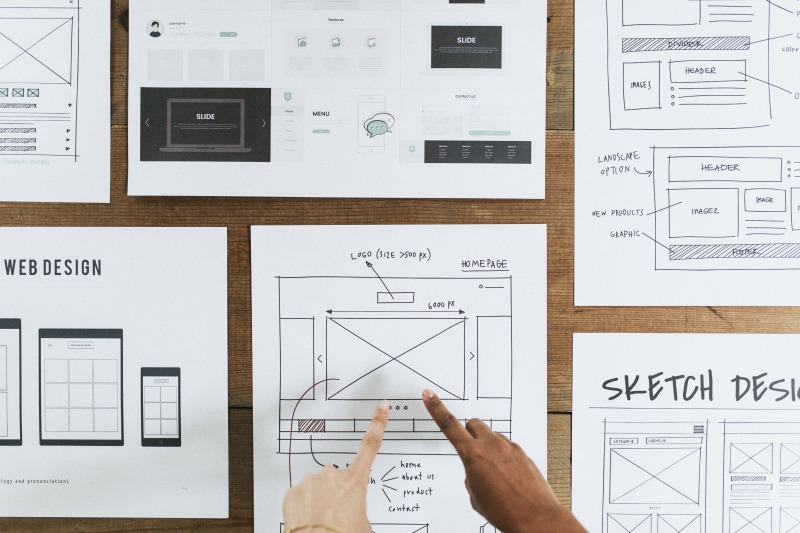
Among the designs I mentioned earlier, the UI/UX design field is relatively new, and I think many people are having a hard time grasping the difference between it and traditional design. However, UI/UX design plays a very important role in system development, so it is an important point to understand. I have written about the importance of UI/UX design in detail in my past blog (" What is UX/UI? What are the meanings and differences between the words and their importance ?"), so please take a look there as well.
Here, we will compare UI/UX design and web design and look at the characteristics of each.
Web Design
Web design focuses on decorative beauty . This is a design that focuses on the appearance and visual elements of a website or mobile app, such as colors, fonts, layout, and graphics, that make a visual impression on users.
UI/UX Design
Compared to the decorative beauty of web design, UI/UX design focuses on " functional beauty " rather than just appearance. UI/UX refers to the overall design that includes the `` operability and ease of use '' when users use a product .
The spread of the concept of UI/UX design is likely due to the spread of smartphones. Before the spread of smartphones, emphasis was placed on the decorative beauty of web designs, but since the advent of smartphones, there has been a great deal of emphasis on design that not only looks good but also includes functionality and ease of use. Ta. Additionally, as the number of users using smartphones is rapidly increasing, there is a growing emphasis on ``mobile-first,'' which emphasizes experiences for mobile devices.In order to optimize the site experience, mobile-first design is adopted. There are many cases.
As mentioned above, design has different characteristics depending on social background, culture, color sense, approach to purpose, national character, values, aesthetic sense, etc. UI/UX, which has a particularly broad definition, has had different understandings and approaches in Japan and overseas. However, in recent years, Japanese design has also been changing to be understood by other countries. It is necessary to understand the characteristics of each product and then optimize the design to suit the country and culture in which the product will be used.
A good example to understand this characteristic is the concepts of "high-context culture" and "low-context culture." A concept proposed by social anthropologist Edward T. Hall in the 1970s. High-context culture and low-context culture are proposed as concepts for analyzing the characteristics of communication between different cultures and understanding the differences. I did. These concepts were widely accepted as tools for understanding intercultural communication barriers and increasing mutual understanding. I will explain it in detail below.
High context culture
In high-context cultures, people rely on tacit understanding and context to convey information. They have a lot of prerequisite knowledge and culture, and they tend to communicate indirectly, by reading between the lines, rather than by direct expressions. It is generally said that Asia, Africa, and Latin America have many high-context cultures, and some say that Japanese communication is the most high-context in the world. It is true that Japanese people often communicate by reading the atmosphere and following unspoken rules that have already been established.
Low context culture
Low-context cultures contrast with high-context cultures, which emphasize concrete language and clear expressions . It is direct and efficient communication , where information is conveyed clearly, simply, and in direct language so that it can be communicated without pre-existing knowledge or culture. In this culture, words and expressions are clear and do not require understanding context or background knowledge. Low-context cultures are mainly found in Western countries, such as New Zealand.
High-context and low-context cultures also influence the differences in design between Japan and other countries. Below, I will explain while looking at the actual site screen.
・We focus on the ease of understanding and convenience of navigation, hierarchy, and sitemap.
・Layout and information density tend to be high
・A lot of useful information is organized and posted.
・It has a lot of explanatory text and focuses on conveying a lot of information to the user.
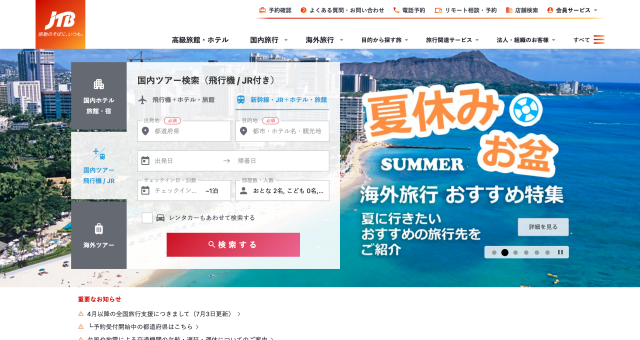
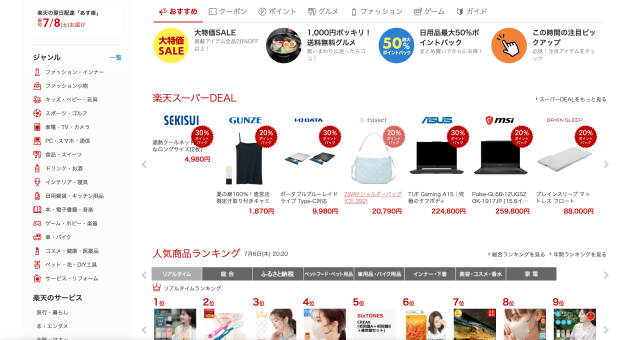
・Low overall density and simple layout preferred
・Emphasis is placed on expressiveness, message quality, and branding.
・Visual elements and dynamic, easy-to-understand expressions are used to bring out the appeal of the product.
・Uses methods that give a direct impression and communication to the user
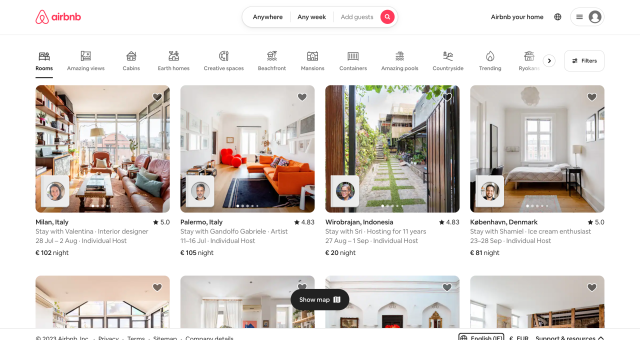
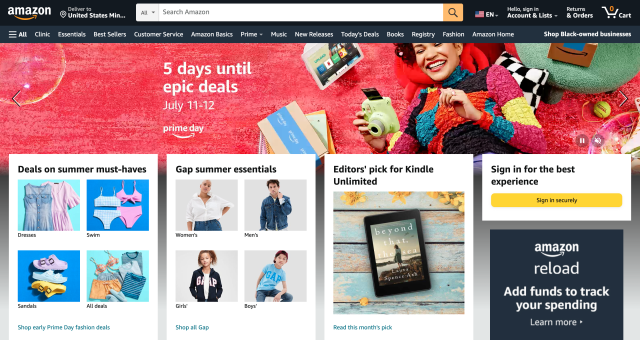
If you actually compare them, you will notice that there are differences in layout, density of information, and amount of text. Japanese sites are more detailed and densely packed with information, whereas overseas sites use a lot of photos and each layout is large.
In this way, the characteristics of design differ depending on the culture, so a design that is easy to see for people from one culture may be difficult to see or inconvenient for people from another culture. In order to value usability, we need to transcend cultural boundaries and understand designs that are easy to understand for all people.
Currently, "user-centered design" is being advocated around the world. It is a design method and way of thinking that focuses on the user, in which the developer takes the user's perspective, improves the product while reflecting the user's needs, and provides a product with high satisfaction for the user. User-centered design has also been shown to improve user satisfaction and productivity, and companies are increasingly adopting user-centered design as they understand the business benefits of effective design. It became.
This user includes all types of users, including the elderly and users with physical disabilities such as visual and hearing impairments. "Accessibility" is also advocated in the iOS and Android design guidelines, requiring designs that are easy to use for all users.
We will introduce important points when proceeding with UI and UX design.
Persona Settings
A persona is a fictional character who is likely to be the primary user of the system. By setting a concrete image of the fictitious user who will be the target user of the system and understanding the user's needs and behavior patterns, you can design a design based on that.
Clarification of purpose/goal
By setting specific goals and objectives for a system or project, the development process can be determined and the team can work together with a common awareness. When it comes to UI/UX, you can prioritize and respond appropriately to user needs and requirements.
Simple and intuitive design
It is important to pursue a design that is simple and easy to understand, allows users to operate intuitively, and allows users to achieve their goals without getting lost in the system.
User-centered design from the user's perspective
Rather than adding novel features or complex designs, understand your users' needs, design your UI/UX from their perspective, and focus on ease of use for your users.
Understanding current problems and areas for improvement
UX research (surveys conducted to understand user needs) is important for investigating user emotions and experiences, identifying problems and improvement measures, and improving user satisfaction. By understanding user needs and discovering potential needs, you can provide better designs and functions. UX research also helps predict future demand.
In this way, understanding user needs is essential and extremely important for the success of UI/UX. By understanding user needs from every angle, you can create great designs.
Up to this point, even when we talk about design, there are different approaches to it depending on the type of design.In particular, when it comes to UI/UX, we have learned that design focuses on "functional beauty'' from the user's perspective, and that Japanese and Japanese We have explained the differences between overseas designs and important points when designing.
In today's society, where digital devices are widespread, we hope that you have understood how important UI/UX design is in order to provide a digital experience with high convenience and user satisfaction. By always being aware of user needs during product development, we can provide a valuable and highly satisfying experience for users.
At JIITAK, we provide careful support by hearing what kind of product you want to develop, and we develop highly satisfying UI/UX and products that match the user's needs. If any of you reading this article are interested in product development or are considering improving current services, Contact JIITAK!

.svg)